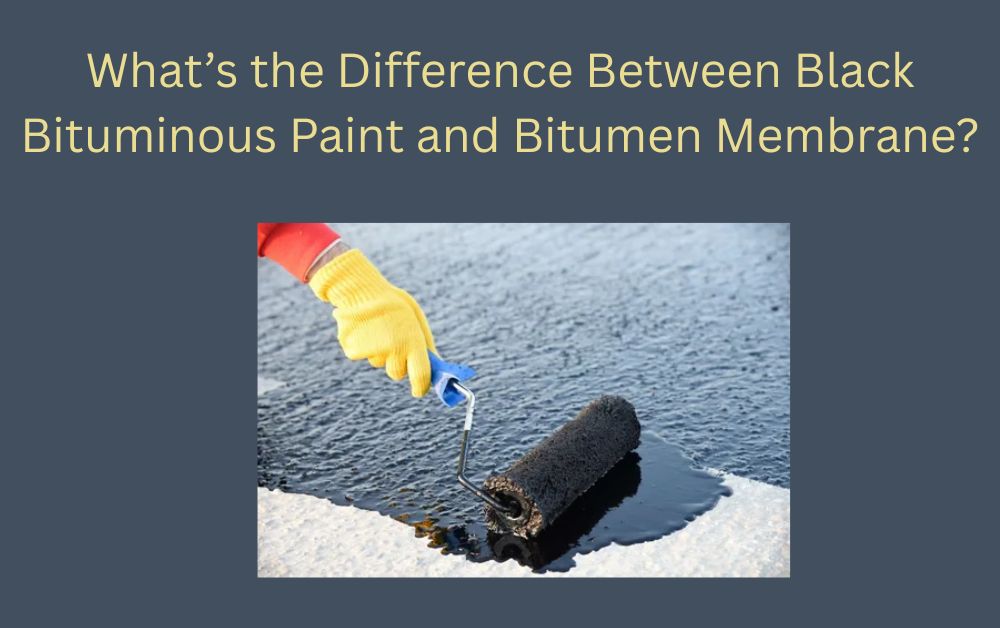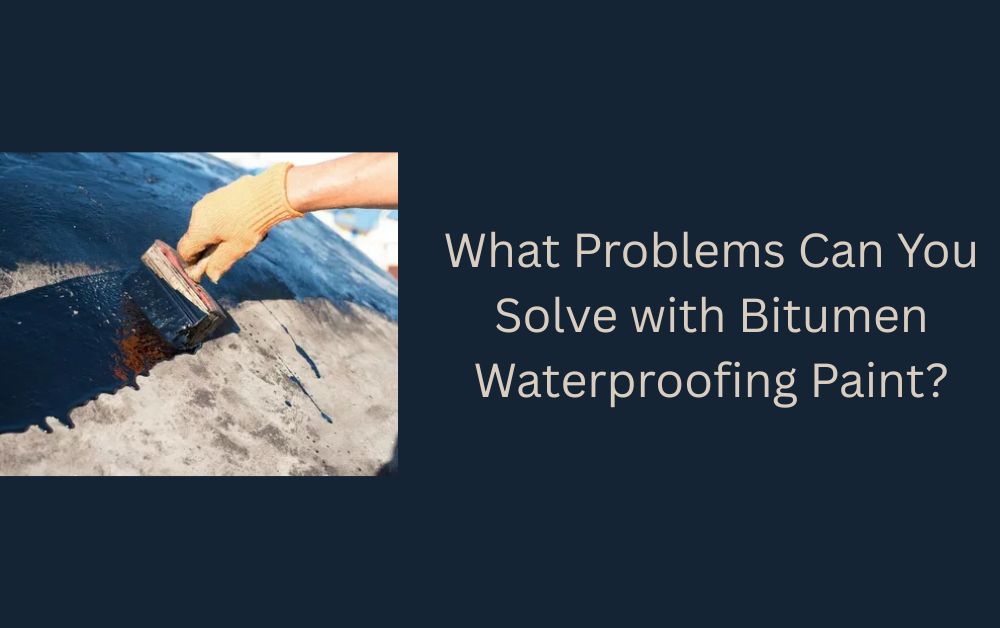When it comes to waterproofing and protecting buildings, bitumen-based materials are widely used. Two of the most popular options in this category are black bituminous paint and bitumen membrane. While both serve the purpose of protection, they are not the same. Understanding the difference between them can help you choose the right material for your project.
In this blog, we will explain what black bituminous paint and bitumen membrane are, their uses, key differences, and how to decide which one is best for your needs.
What is Black Bituminous Paint?
Simple Explanation of Bituminous Paint
Black bituminous paint is a thick, black liquid that is made from bitumen. Bitumen is a sticky, black substance that is a byproduct of crude oil. This paint is applied directly onto surfaces and forms a protective coating once it dries.
Common Uses of Bituminous Paint
- Waterproofing metal surfaces
- Protecting concrete from moisture
- Coating pipelines and tanks
- Temporary waterproofing of roofs
Advantages of Bituminous Paint
- Easy to apply with a brush or roller
- Low-cost solution for surface protection
- Quick drying and simple maintenance
What is Bitumen Membrane?
Simple Explanation of Bitumen Membrane
Bitumen membrane is a sheet-like waterproofing material that comes in rolls. It is also made from bitumen, but it has added materials like polymers for flexibility and strength. The sheets are rolled out and applied using heat (torch-on) or self-adhesive methods.
Common Uses of Bitumen Membranes
- Waterproofing flat roofs
- Basement waterproofing
- Wet areas like bathrooms
- Foundations of buildings
Advantages of Bitumen Membrane
- Provides long-term waterproofing
- Strong and durable
- Resistant to weather and UV rays
Key Differences Between Black Bituminous Paint and Bitumen Membrane
1. Form and Appearance
- Black Bituminous Paint: Comes in liquid form, like regular paint.
- Bitumen Membrane: Comes in solid roll sheets.
2. Application Method
- Paint: Applied using a brush, roller, or spray.
- Membrane: Applied using a torch (heat) or as a peel-and-stick sheet.
3. Surface Coverage
- Paint: Thin layer; good for small projects or temporary waterproofing.
- Membrane: Thicker, more reliable coverage; ideal for large areas.
4. Durability
- Paint: Not as durable and may need re-application over time.
- Membrane: More durable and long-lasting.
5. Waterproofing Quality
- Paint: Provides basic waterproofing.
- Membrane: Offers full waterproofing even in heavy rain or water exposure.
6. Cost
- Paint: Cheaper and budget-friendly.
- Membrane: More expensive but offers longer protection.

When Should You Use Black Bituminous Paint?
Ideal Situations for Using the Paint
- When you need a quick and low-cost waterproofing solution
- For temporary protection of surfaces
- To coat metal surfaces, pipes, or tanks
Pros and Cons of Black Bituminous Paint
Pros:
- Easy to apply
- Affordable
- Good for DIY projects
Cons:
- Not very strong for heavy-duty applications
- Can crack over time if exposed to sun or weather
When Should You Use Bitumen Membrane?
Ideal Situations for Using Membrane
- For permanent waterproofing of roofs and basements
- In commercial and residential buildings
- Where strong and long-term protection is needed
Pros and Cons of Bitumen Membrane
Pros:
- Long lifespan
- Excellent waterproofing
- Can handle heavy water pressure
Cons:
- Requires skilled workers to install
- More expensive
Which One is Best for Your Project?
Think About Your Needs
Ask yourself a few simple questions:
- Do I need long-term waterproofing or temporary protection?
- Is the area small or large?
- What is my budget?
- Do I have access to professionals for installation?
General Recommendation
- Use black bituminous paint for small, quick jobs or DIY tasks.
- Use bitumen membrane for big projects like roofing or basements, where long-term protection is important.
Application Tips for Both Products
Tips for Applying Black Bituminous Paint
- Clean the surface well before applying
- Use a brush or roller
- Let the first coat dry before applying the second
- Wear gloves and a mask while working
Tips for Applying Bitumen Membrane
- Make sure the surface is dry and clean
- Use a blowtorch if using torch-on type
- Seal all the edges properly
- Hire a professional for best results
Safety Precautions
While Using Black Bituminous Paint:
- Work in a well-ventilated area
- Keep away from open flames
- Store the container properly
While Installing Bitumen Membrane:
- Use protective clothing
- Be careful when working with fire
- Follow manufacturer instructions
Conclusion
Both black bituminous paint and bitumen membrane are useful waterproofing products, but they are designed for different jobs. Paint is easy to use and good for small areas or short-term use. Membrane is better for bigger areas and gives long-lasting protection. By understanding your project needs, you can choose the right solution for your home or building.
If you’re unsure, it’s always best to speak with a waterproofing expert who can guide you based on your budget, area size, and protection level needed.
For more insightful articles related to this topic, feel free to visit viewsparrow












Leave a Reply